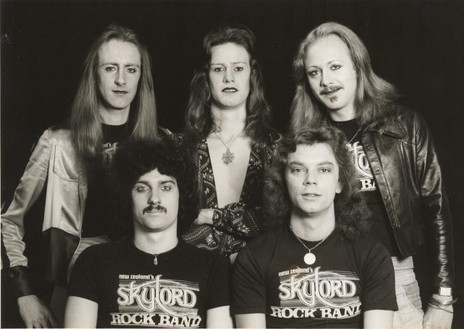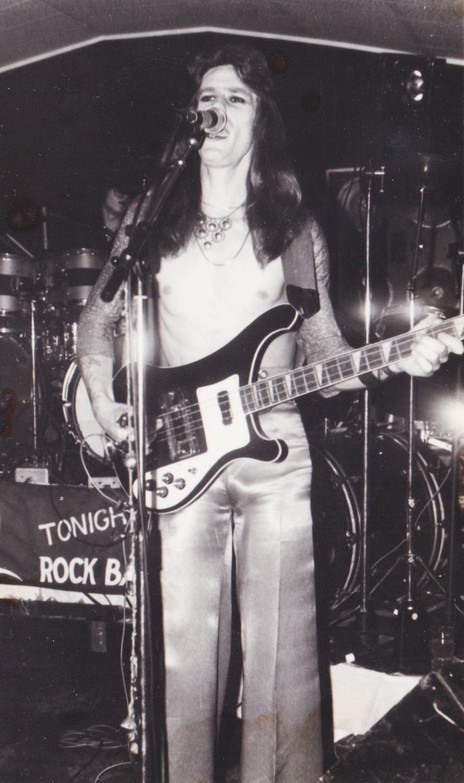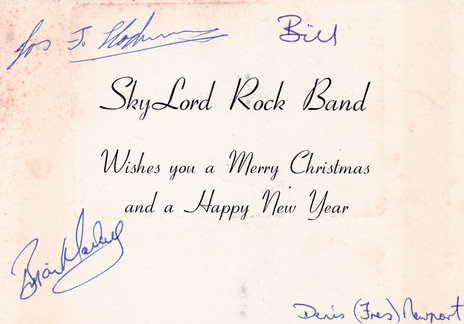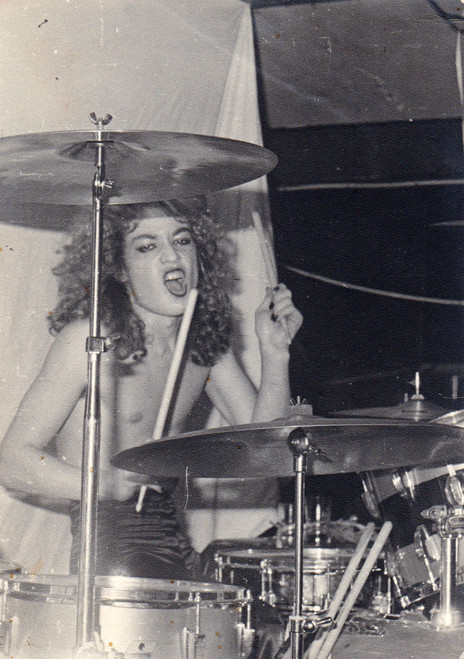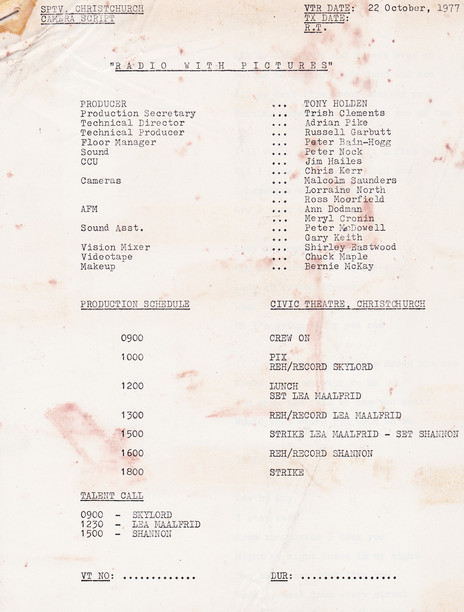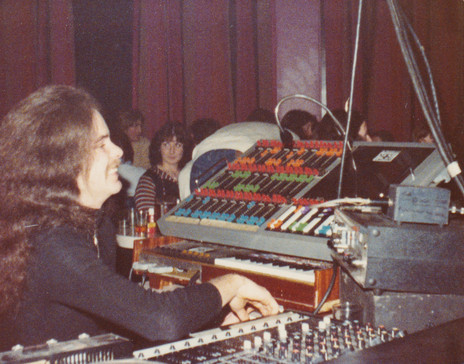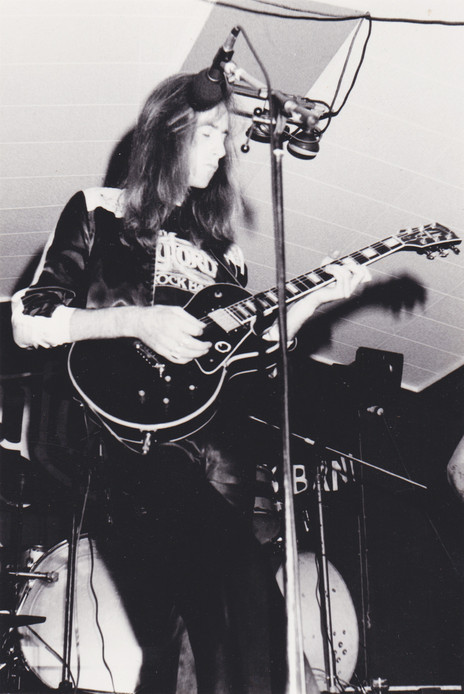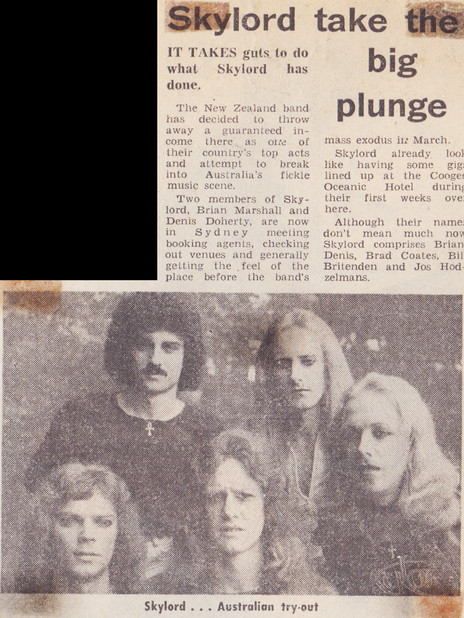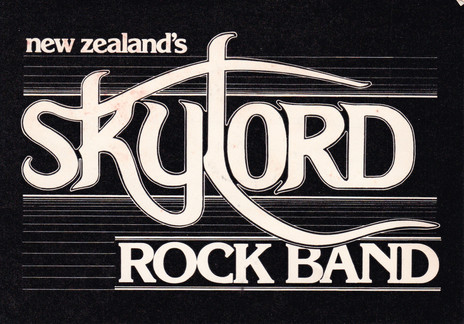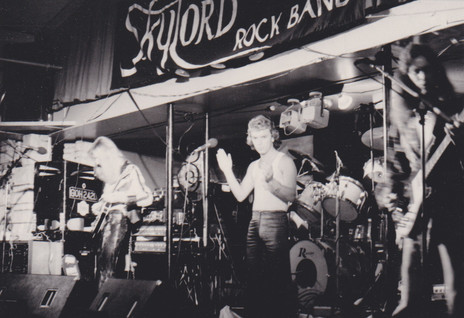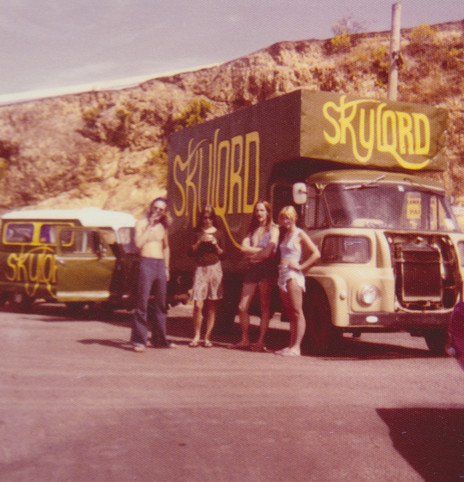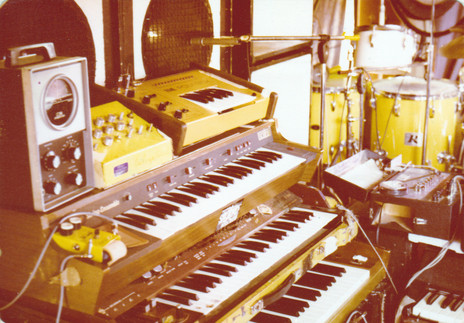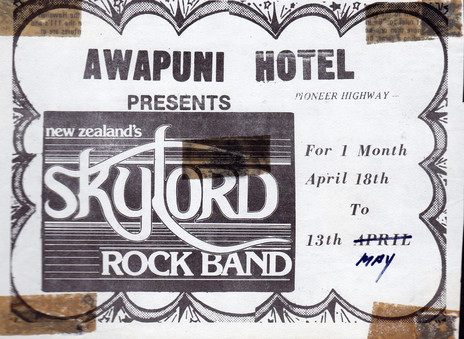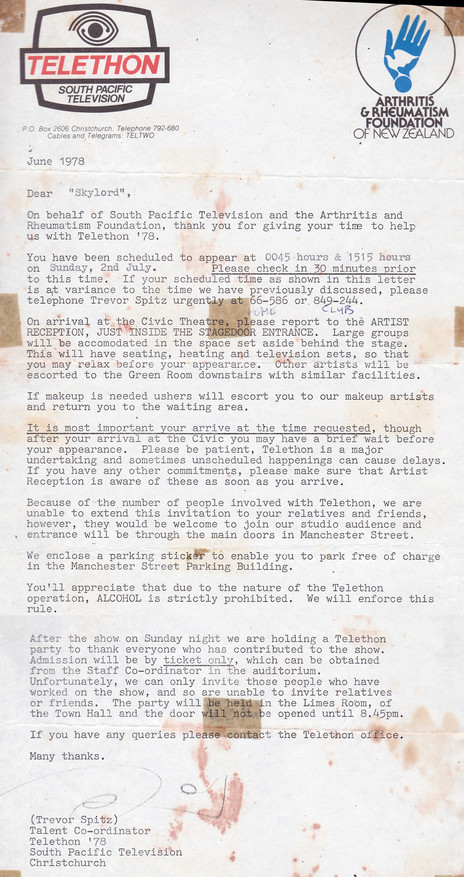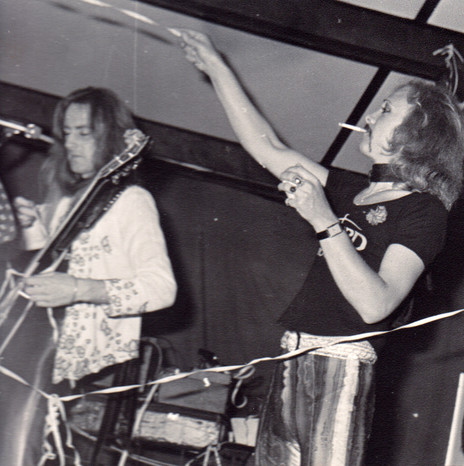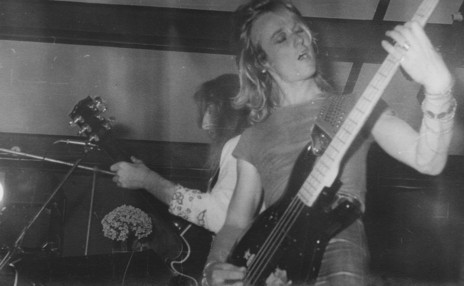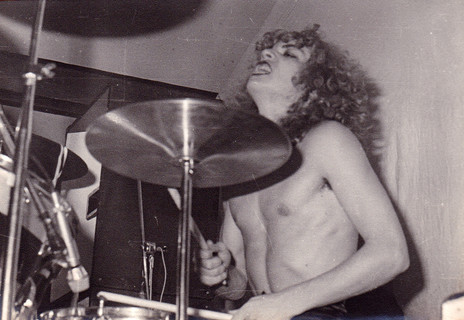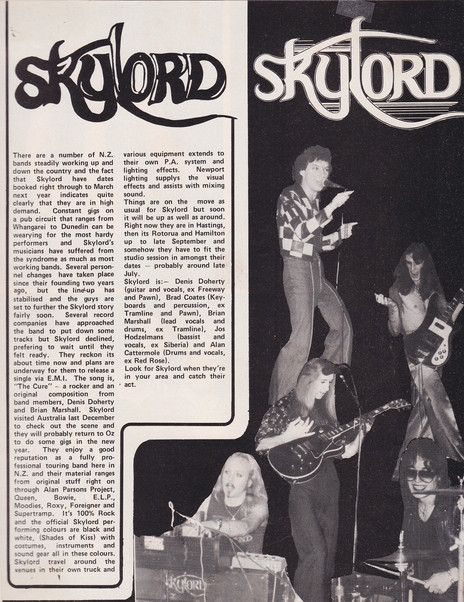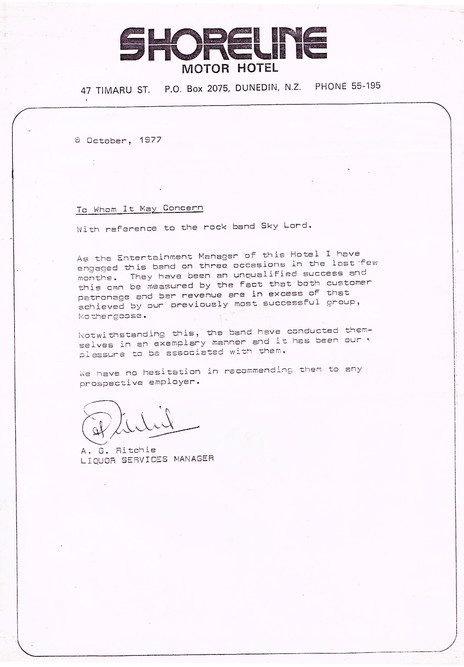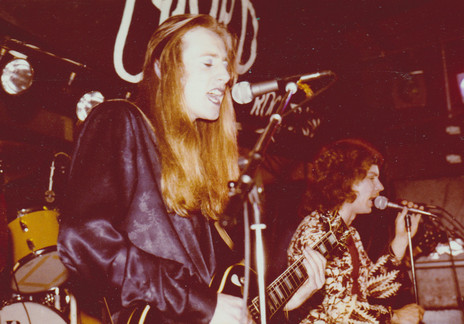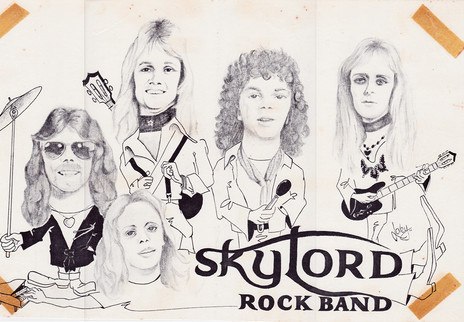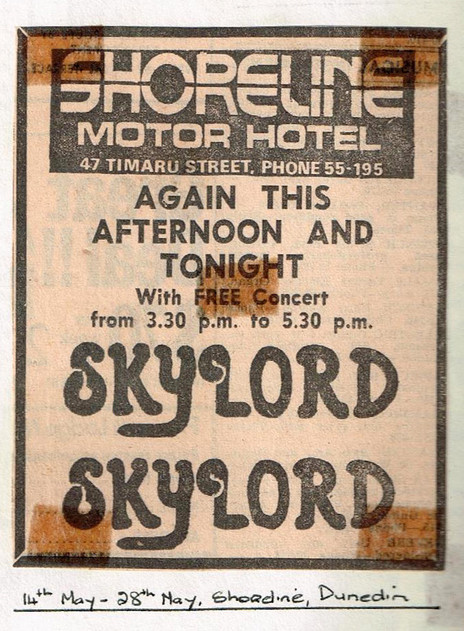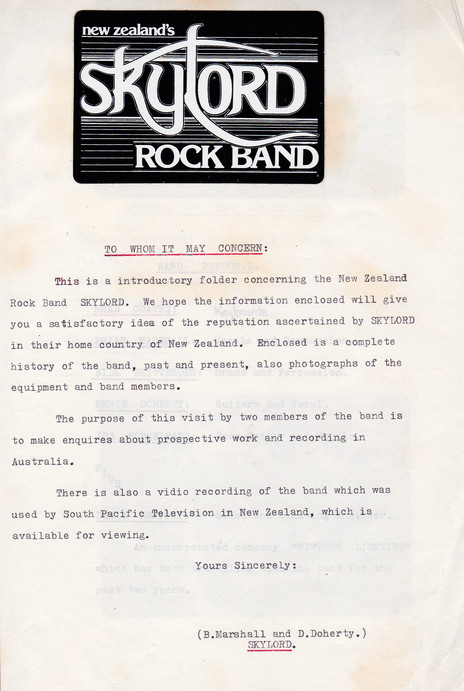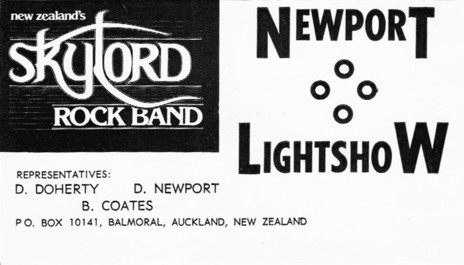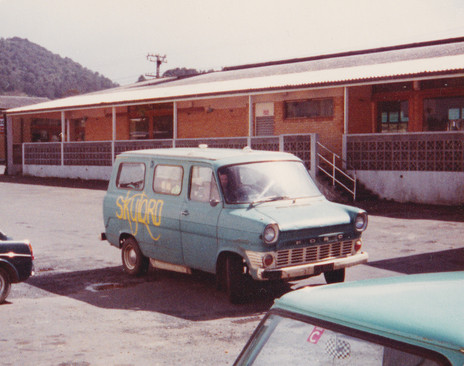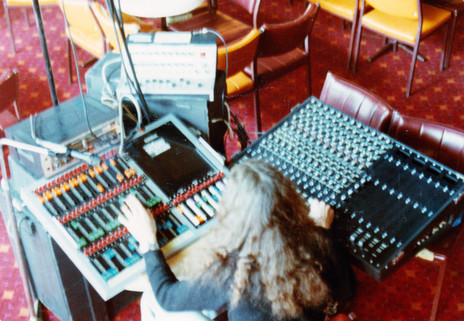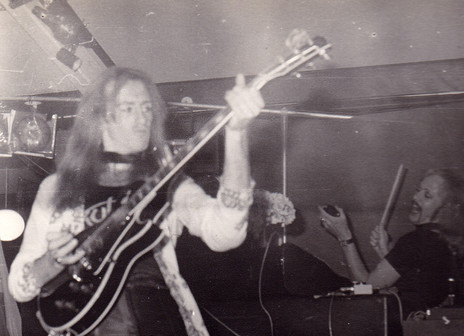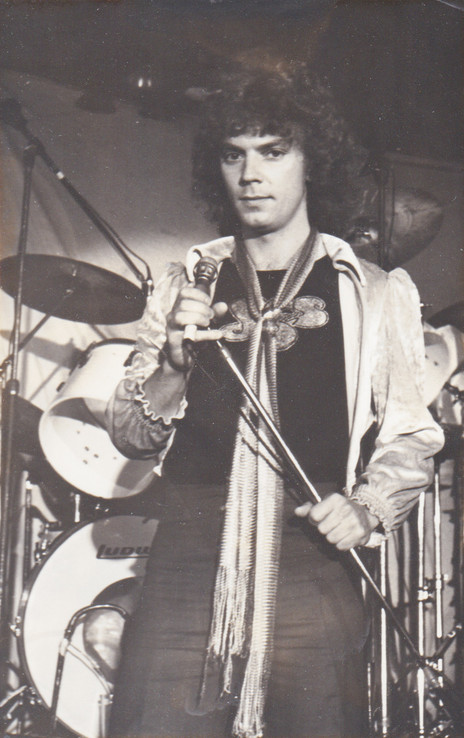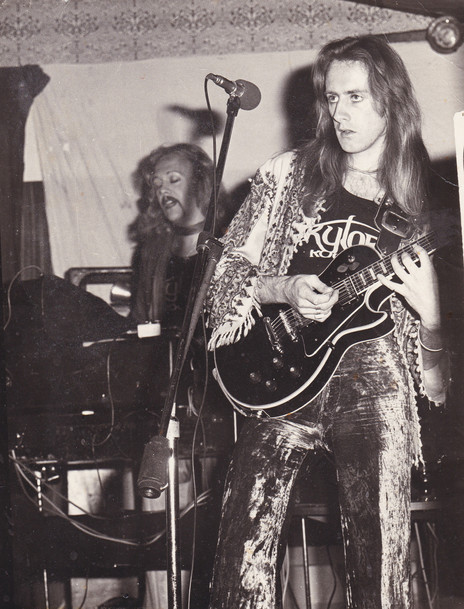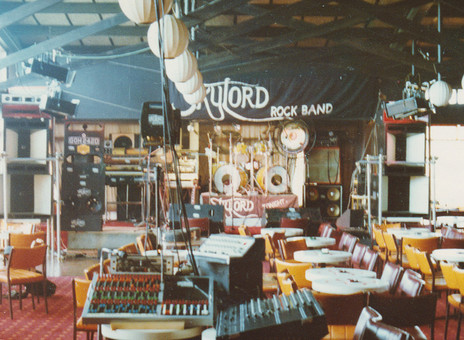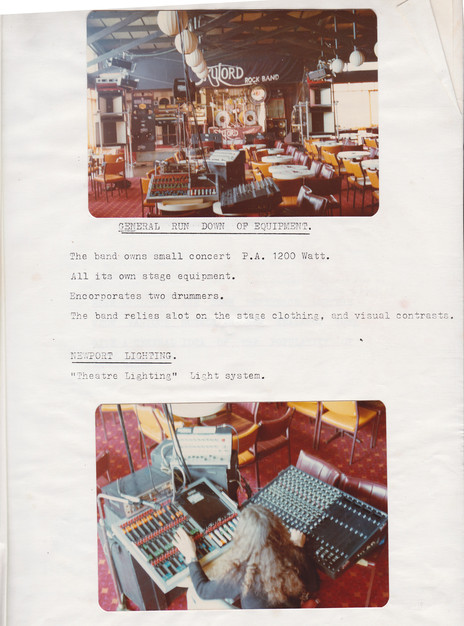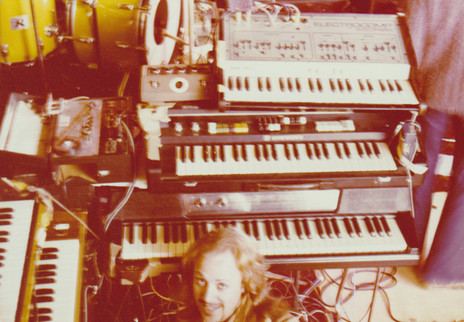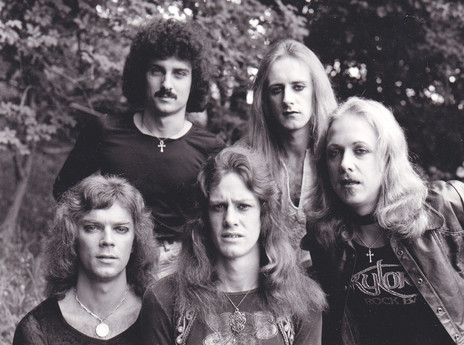They promoted themselves as “New Zealand’s rock band” and had T-shirts, stickers, postcards, Christmas cards and matchboxes made up to sell at gigs. They fought against the jeans and T-shirt look and purposely set out to create a larger-than-life persona in tailored clothes and platform shoes. In reality the band were akin to a bunch of naughty little boys having a hoot!
They would publicise their show simply by wandering the streets in make-up, long coloured hair and garish outfits.
Band members were accused of lowering the tone of some provincial towns when they would publicise their show simply by wandering the streets in make-up, long coloured hair and garish outfits. The office and shop workers would cotton on that they must be the glam band that was advertised at the area’s top pub that week.
Self-managed and never part of the Auckland recording industry in-crowd, the opportunity to release any music passed Skylord by. They were never in one place long enough; they lived in the hotels they played, working six nights a week, travelling on the other day and spending eight hours setting up their gear at the next venue, sans roadies.
They toured up and down both islands with lighting technician Denis Newport and his massive lighting rig, their own drum riser and specially made dry ice machines inside oversized Leopard beer cans. By 1977, they had a 6.5-ton truck for their sound gear and a Transit van for band members, girlfriends, guitars, eight keyboards (à la Emerson, Lake & Palmer), a dog and a cat.
However, the Pink Floyd, Supertramp, Boston and even Sex Pistols covers were hardly what you’d expect of “New Zealand’s rock band” intent on leaving a lasting legacy. They did eventually have a set of their own material, but Skylord split in 1978, road weary and uncertain of how to transfer their New Zealand operation to Australia.
Guitarist Denis Doherty and drummer Mike Butler were part of Freeway, the first professional touring band out of Feilding in the early 1970s, mixing their pop repertoire with Jethro Tull, Uriah Heep and Grand Funk Railroad. At the end of Freeway’s final gig at Napier’s Cabana in 1974 the crowd carried the band out on their shoulders. Doherty and Butler ventured to Auckland, becoming commercial cleaners while they plotted their next move.
Lew Pryme’s Fullers Entertainment Bureau had set up a Freeway Fan Club that was run by a girl named Janet, who was friends with members of the recently defunct Auckland rock band Tramline – national winners of the Battle of the Bands in 1971.
When Doherty needed to collect musical equipment from his parents’ home in Mount Maunganui, Janet suggested Tramline keyboards player Brad Coates, who owned a van. Coates turned up at Doherty and Butler’s flat in revealing short pants, purple streaked hair and mascara. Far from frightening the ex-Freeway members, the trio clicked and set off on their trip. On their way back, with the benefit of copious amounts of alcohol, they decided to start a band.
They formed Pawn with singer Greg Layton and Napier bass guitarist Julian Cowie, painted their gear green and yellow, dyed their hair, donned tight trousers and make-up and hit the road as “shock-rockers” in a cloud of dry ice and pyrotechnics.
During the next year, they appeared on South Pacific Television show Norman and Tom Boucher took over from Cowie before the band changed their name to Skylord in November 1975.
Skylord repainted their gear black and white, and – in large part due to Coates’s purchase of a tape echo, suddenly opening up a wide range of new, more ethereal sounds – they shifted away from the Uriah Heep sound to album tracks by the likes of Pink Floyd, Supertramp and The Alan Parsons Project.
Boucher nearly walked into one of the band’s onstage explosives.
The first shows under the new moniker were at the Settlers in Whangarei and Gatsby’s in Auckland, where Cruise Lane had ended their days a few months earlier. Boucher learnt quickly to watch his step after nearly walking into one of the band’s onstage explosives.
In March 1976 Skylord acquired a new rhythm section in drummer Allan Cattermole and former Odyssey bassist Rob Gray. The pair had been impressed by the musicality and the light show of Pawn on previous tours and answered newspaper ads when Boucher and Butler opted out.
They began introducing the music of newer bands such as Boston, Queen and The Sex Pistols and settled in Christchurch for a time when the publican at the Aranui Tavern insisted he book Skylord for three months! They parked up the truck and van and rented a house.
1977 was a year full of changes. In January, Brad Coates’ former Tramline bandmate Brian Marshall became vocalist. A month later, Gray’s mate Dave Painting replaced Cattermole on drums. The new recruit had one of the band girlfriends puzzled when he was learning the song list loudly one afternoon in Palmerston North. Upon asking what the racket was she was informed it was just Dave Painting. “But what’s he painting?” she enquired.
Painting’s tenure was brief when he and Gray departed to form their own band and were replaced by Billy Brittenden and Jos Hodzelmans respectively. In October this line-up performed their own songs ‘Twilight World’ and ‘Rivers’ on Radio With Pictures.
At Christmas 1977, Skylord turned down a staggering $7000 from a Dunedin hotel for guitarist Denis Doherty and singer Brian Marshall to take a promotional trip to Sydney with kits that included the Radio With Pictures footage. Some of the city’s key agents were keen to work the band, but only once they got their own way over. After several phone calls to assorted freight and cruise-ship companies it proved too big a task.
The band took up again in January at the Bell Block in New Plymouth and in February Brittenden decided the touring life was not for him. Skylord found a ready-made replacement in former drummer Allan Cattermole who had decided the resident gigging life back in Christchurch was not for him.
It was business as usual for the first half of the year until Marshall headed back over the Tasman Sea in July with his Australian girlfriend. Skylord fulfilled their final bookings with Doherty and Hodzelmans sharing vocal duties, winding up on 26 August 1978, at the Hillcrest Tavern in Hamilton.
Without any recorded output, Skylord were one of the biggest draw cards in New Zealand for the second half of the 1970s; an impossible act to follow even for the likes of a fledgling Hello Sailor. As a driver on a short Coup D’Etat tour in the early 1980s, Doherty was informed by Harry Lyon that Sailor hated coming in after Skylord because all the publican could talk about was how big Skylord’s crowd had been in comparison to theirs.
Skylord’s work ethic was beyond reproach, their marketing was well ahead of its time and their stage show was something to behold, but if you hadn’t seen them, how could you talk about them?
